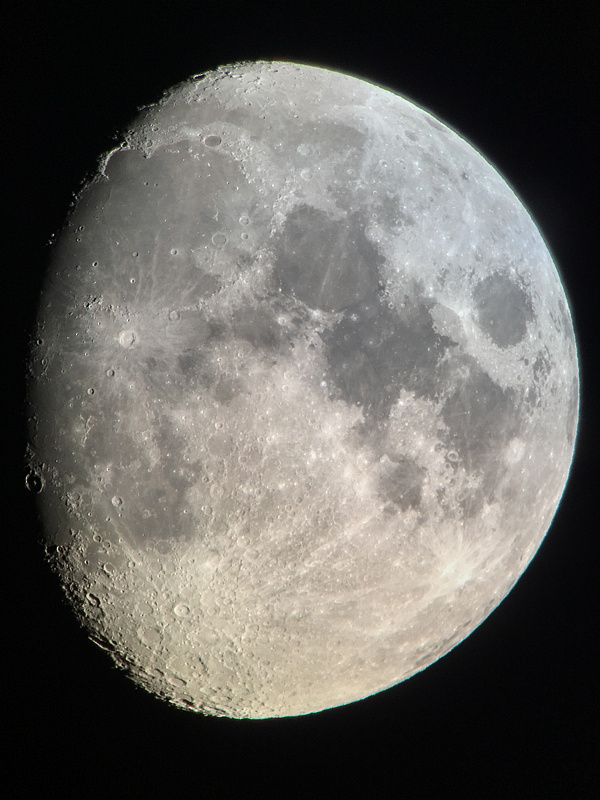Imaging: Moon-Jupiter Conjunction, Moon, ISS
Posted: 18 April 2016
During the day on Sunday, 17 April 2016, I unboxed the new pier and checked out the parts. Hope to get it installed in the observatory by the end of the month.
|
Open: Sunday, 17 April 2016, 1826 MST Temperature: 84°F |
Session: 949 Conditions: Clear |
I did not plan to use the POD Zenith Table this session, but I did continue using the repaired Wireless AutoStar II handcontroller, which worked well. 1836 MST: powered on the 12" LX600. StarLock OFF. Viewed Mercury, 102X. Seeing was not very good. Switched to 443X; a less than half-phase illumination of Mercury was visible.
I then updated the TLE for the night's pass of the International Space Station (ISS). 1857 MST: sunset. Final look at Mercury, 102X. Slewed to Jupiter. Both Jupiter and the waxing gibbous Moon were in the finderscope field-of-view. 1900 MST: viewed Jupiter, 102X. Three moons were visible. Next, I viewed Jupiter and the Moon using the Celestron Cometron 12x70 Binoculars. Really nice view of both in the binoculars. I used the Nikon D7200 DSLR for this photograph (cropped) of Jupiter (upper left) and the waxing gibbous Moon, f/6.3, 1/640sec, ISO 400, White Balance Auto, FL 140mm:

Click or tap on image for larger version
I tried viewing Jupiter at 443X but seeing was not good enough for that much magnification.
Next, viewed the Moon, 102X. Took this handheld iPhone 6s Plus afocal photograph:

Tried using 443X on the Moon but seeing was not good enough. I did take this handheld iPhone afocal photo of crater Gassendi:

1920 MST: began preparing for the ISS pass, which would begin at 1952 MST. Mounted the D7200 DSLR at prime focus + visual back. Did a focus test on Capella using the Astrozap mask. 1929 MST: ready for the pass. This pass would go near the North Celestial Pole (NCP). The AutoStar satellite tracking always goes berserk when satellites are near the NCP. When the telescope was slewed to the pass start location I could not reach the finderscope eyepiece. The pass started a little earlier than predicted by the AutoStar and initial pointing was off. I used the finderscope bracket alignment bolts to try to get the telescope pointed near the ISS. Eventually I was able to see the ISS in the finderscope and get it briefly centered before the AutoStar went berserk. Once the ISS passed the NCP and the AutoStar settled down I was able to get the ISS re-centered for some of the remaining pass. These images from the HD video, 1.3X crop factor, 60 fps, 1/1600sec, ISO 4000, show the ISS before the NCP (left) and after the NCP (right two):

I still need to refine the exposure settings with this new telescope.
After the ISS pass was completed I began closing up the observatory as I had another task to do that evening.
|
Close: Sunday, 17 April 2016, 2015 MST Temperature: 62°F |
Session Length: 1h 49m Conditions: Clear |
Comments are welcome using Email. Twitter users can use the button below to tweet this report to your followers. Thanks.
Cassiopeia Observatory Home Page
Copyright ©2016 Michael L. Weasner / mweasner@me.com
URL = http://www.weasner.com/co/Reports/2016/04/18/index.html
